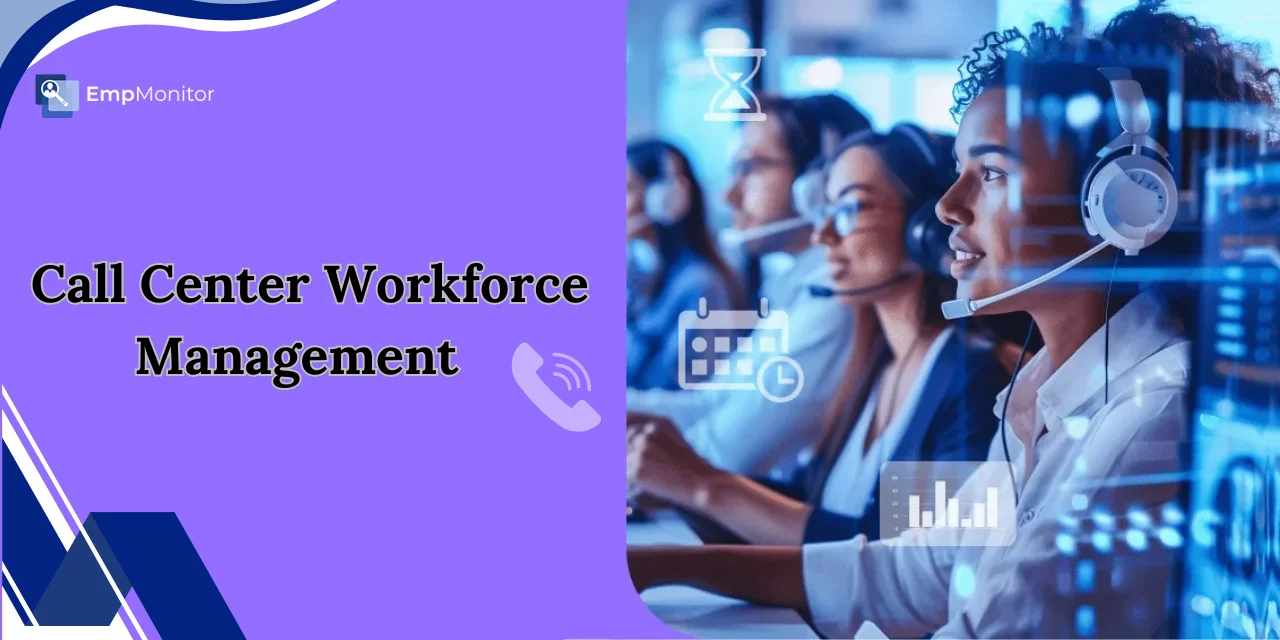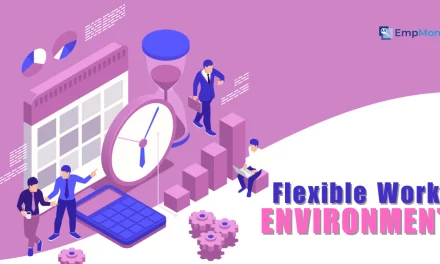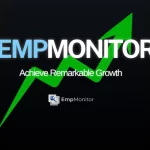Effective call center workforce management is essential for maintaining high levels of customer service while optimizing operational efficiency. By strategically planning and scheduling agents, businesses can ensure they have the appropriate number of staff at the optimal times to handle fluctuating call volumes. It reduces wait times, improves customer satisfaction, and minimizes costs associated with overstaffing or understaffing.
In this blog, we will explore key strategies and best practices for managing a call center workforce, from forecasting demand to leveraging advanced software tools. Whether you want to streamline operations or boost your team’s performance, these insights will help you create a more responsive and efficient call center environment.
In a hurry? Listen to the blog instead
What Is Call Center Workforce Management?
Workforce management (WFM) in a call center or contact center involves overseeing and optimizing staff to ensure adequate coverage. At its core, WFM includes all processes related to scheduling and managing contact center employees, providing the right number of agents available at the right times and locations.
As a call center manager or someone involved in staffing, you’re likely aware of the complexities involved in workforce management . Balancing agent availability with fluctuating call volumes requires careful planning and numerous considerations to maintain operational efficiency. Proper Workforce management solution is crucial for meeting customer demand while optimizing resources.
To streamline these processes, tools like EmpMonitor provide real-time insights and features that can help enhance performance and ensure seamless operations.
Why Is Workforce Management (WFM) So Crucial In A Contact Center?
Beyond preventing daily headaches, effective call center monitoring and management brings significant benefits.
Enhanced Customer Experience
Customers expect excellent service when they contact your business, regardless of internal challenges. Efficient WFM ensures high call resolution rates and real-time support, leading to satisfied customers. Poor WFM, however, can result in long hold times and inefficient call handling. Simply having equitable agents available and correctly staffed can significantly improve customer experience.
Cost Savings
Accurate staffing predictions are essential to avoiding overstaffing or understaffing. Overstaffing increases payroll costs while understaffing leads to long wait times and stressed agents, ultimately reducing customer satisfaction. Striking the right balance in staffing is essential for cost efficiency.
Increased Employee Engagement
Happy agents lead to happy customers. Effective call center workforce management ensures engaged and satisfied employees who aren’t overworked or stressed perform better and contribute to higher profitability. According to research, companies with highly engaged workforces are 24% more profitable.
Here are three methods WFM uses to boost employee engagement:
- Productive Feedback: Effective WFM provides the data needed to give constructive feedback, empowering agents to improve productivity and efficiency.
- Ongoing Training: Continuous training, supported by WFM data, helps optimize workflows and improve customer interactions, enhancing overall workforce performance.
- Performance Metrics: Data-driven feedback and training with clear goals drive employee engagement. WFM solutions like EmpMonitor provide the insights needed for effective performance management.
Key Features of Call Center Workforce Management
While each business might approach call center management (WFM) differently, there are essential components that WFM tools must include.
Staff Forecasting and Scheduling
Accurate staff forecasting and scheduling are crucial for ensuring the right number of employees are available at the appropriate times. Factors like customer trends, seasonality, and business demands can complicate scheduling, leading to understaffing or overstaffing.
Effective WFM leverages historical data to create efficient future schedules, often integrating with other call center platforms such as interactive voice response (IVR) software to enhance accuracy.
Real-Time Team Management
Modern WFM software provides real-time insights into employee status, allowing managers to monitor workers throughout the day. This visibility helps identify opportunities for training and development and enables managers to quickly reallocate staff in response to unexpected spikes in customer demand, ensuring optimal resource use.
Reporting and Analytics
Data reporting and analytics are transformative for business operations. Call center Workforce management reports offer insights into company metrics and employee performance, which you can combine with data from other platforms, such as call center software. Businesses can use this comprehensive data for diverse decisions, including scheduling, identifying training needs, managing day-to-day operations, and planning future strategies.
Time and Attendance Tracking
Proper time and attendance tracking is essential for monitoring hours worked, productivity, and scheduled absences. Tools like EmpMonitor ensure employees accurately log their time and daily activities, which helps optimize payroll budgets, reduce operational costs, and improve overall efficiency. This tracking can significantly boost employee productivity when combined with other processes like call center scripts.
Successful call center workforce management depends on accurate forecasting and scheduling, detailed time and attendance tracking, real-time team oversight, and comprehensive reporting and analytics. These elements help businesses optimize their workforce, enhance productivity, and deliver superior customer service.
EmpMonitor- Workforce Management Software
EmpMonitor is a comprehensive workforce management and employee monitoring software designed to help organizations enhance productivity, ensure security, and manage their workforce effectively. It provides tools for monitoring employee activities, tracking attendance, and generating insightful reports.
Key Features of EmpMonitor
Real-Time Monitoring
EmpMonitor enables employers to track employee activities in real-time. It includes tracking active and idle time, application usage, website visits, and keystrokes. Managers can view live screenshots to ensure employees stay productive and do not engage in non-work-related activities.
Time Tracking and Attendance Management
EmpMonitor provides accurate time tracking to help manage employee attendance. It logs when employees clock in and out, tracks their work hours, and helps identify patterns in attendance. This feature ensures employees adhere to their schedules, streamlines payroll processes, and ultimately helps in call center workforce management
Productivity Analysis
EmpMonitor helps employers understand how employees spend their time within the organization with detailed productivity reports. The software generates productivity scores based on active hours and task completion, which helps managers identify high-performing employees and those who require additional support or training.
Data Security and Insider Threat Detection
EmpMonitor enhances data security by monitoring suspicious activities that could indicate insider threats. It tracks file transfers, USB device usage, and unauthorized access attempts, providing alerts to prevent potential data breaches and ensure compliance with security policies.
Remote Workforce Management
EmpMonitor is particularly useful for managing remote teams. It allows managers to oversee remote employees’ activities and ensure they remain productive, regardless of location. As a key component of call center workforce management, this feature is critical in today’s remote work environment, providing the same level of oversight as in an office setting.
User Activity Logs
The software maintains detailed logs of all user activities, including login times, applications used, websites visited, and files accessed. This feature is valuable for audits and ensuring accountability within the organization.
Keystroke Logging
EmpMonitor includes keystroke logging to capture and record all keystrokes made by employees. It helps you understand employee workflows, detect potential data leaks, and ensure that company policies are being followed.
EmpMonitor is a powerful tool for businesses looking to enhance productivity, improve employee management, and ensure data security. Its wide range of features makes it suitable for organizations of all sizes, providing comprehensive insights and control over workforce activities.
What Are The Challenges of Call Center Workforce Management?
Managing a call center workforce is demanding, requiring quick customer support and adept handling of the complex dynamics between managers and agents. Several challenges emerge:
- Hard-to-Forecast Workload Demands
Call center managers often encounter unexpected workload surges driven by external factors beyond their control, making it hard to predict staffing needs accurately.
- Around-the-Clock Operational Requirements
Providing continuous customer service necessitates shift rotations and constant vigilance to ensure seamless service delivery at all hours.
- Reliance on Manual Spreadsheets
Using traditional, manual spreadsheets for tasks like shift scheduling can lead to errors, oversights, and inefficiencies, hampering overall productivity.
- Excessive Absenteeism
Unexpected absences and disengagement disrupt workflow, which places additional burdens on present agents and impacts service quality.
- High Staff Attrition
Call center agents often face high-stress levels that lead to frequent turnover. Effective call center workforce management training can help mitigate this issue by optimizing recruitment and training processes, thereby conserving resources and enhancing performance.
- Ensuring Shift and Break Adherence
Tracking when agents clock in and out and ensuring adherence to shifts and breaks is an ongoing challenge for managers.
- Financial Restrictions
Limited budgets can impede the procurement of necessary resources and tools, hampering workforce expansion and efficiency.
- Communication Gaps with Upper Management
Disconnects between agents and managers can create perception gaps, making agents feel isolated and undervalued, which affects morale and performance.
- Balancing Customer Expectations
Handling various customer questions and issues requires effective, skill-based task distribution. Call center workforce management must deliver prompt and accurate service to customers while efficiently managing limited resources.
- Adapting to Technological Changes
The continuous technological evolution requires agents and management to stay updated, adding another layer of complexity to workforce management.
While maintaining high customer service levels and employee satisfaction, managing a call center workforce involves coping with unpredictable workloads, ensuring continuous operations, overcoming resource limitations, and adapting to technological advancement.
What Are The Call Center Workforce Management Best Practices?
Here are the best practices and essential tips to optimize workforce management and drive outstanding results.
Ensure Compliance with Relevant Regulations
Maintaining compliance with labor laws is crucial to avoiding legal issues and creating a fair work environment where employees feel protected. Stay updated on local and international labor laws and regulations, such as fair labor standards, sick leave, and medical care regulations. Conduct compliance audits regularly to ensure adherence.
Optimize Hiring and Onboarding Processes
Effective hiring and seamless onboarding are essential for integrating the right candidates and boosting productivity. Streamline these processes by identifying ideal call center agents, posting clear job descriptions, using platforms like LinkedIn and Glassdoor, establishing a structured hiring process, partnering with recruiters, pre-screening candidates, and updating training materials regularly. Avoid rushing these processes to ensure quality hires.
Facilitate Cross-Functional Collaboration
Promote effective communication and teamwork across call center workforce management teams to ensure alignment and address agents’ concerns. Schedule cross-departmental meetings, encourage open dialogue about WFM challenges, eliminate siloed work, and use collaboration tools to connect teams. It fosters a sense of belonging and cooperation, enhancing overall functionality.
Use Forecasted Data for Optimized Schedules
Leverage forecasts to align staff with expected interaction volumes and design efficient call center shifts. Regularly update schedules using refined forecasts and account for peak hours. Utilize tools like the Erlang call center staffing calculator for optimal staffing levels and be flexible when scheduling shifts to adapt to unpredictable workloads.
Assign Agents Based on Skills and Business Needs
Match agent skills and preferences with a business need to boost morale and reduce attrition. Consider agents’ strengths, weaknesses, and preferences, and establish a culture of employee surveys to incorporate feedback into your call center workforce management process. Regularly review and adjust assignments as business needs evolve.
Plan for the Unexpected
Prepare for unexpected challenges with real-time adjustments to maintain service levels. Use real-time analytics to monitor and adjust strategies, considering sudden call volume spikes and maintaining an emergency response plan. Act swiftly in response to real-time changes to prevent minor issues from escalating.
Prioritize Agent Well-Being and Satisfaction
Happy agents perform better and stay longer, reducing the cost of agent replacement. Promote work-life balance and mental well-being, recognize outstanding performance, and treat signs of burnout or dissatisfaction seriously. Avoid a one-size-fits-all approach to agent needs.
Build an Employee Self-Service Portal
Empower agents with a self-service portal to independently access information and perform actions, reducing administrative overhead. As part of effective call center workforce management, design a user-friendly interface, integrate an internal knowledge base, keep materials updated, ensure easy access, and allow agents to view performance and provide feedback on the portal.
Foster a Culture of Continuous Learning
Equip agents with new skills through continuous learning to adapt to industry changes. Offer regular training sessions, provide access to customer service books and podcasts, encourage feedback and idea sharing, and support agents in pursuing certifications. Attend customer experience conferences for networking and learning opportunities.
Utilize Analytics and Monitor KPIs
Understand workforce effectiveness and identify areas for improvement using analytics and KPIs. Regularly review necessary KPIs like average answer speed, call abandonment rate, net promoter score, and customer satisfaction. In call center workforce management, make data-driven decisions and set realistic KPI targets based on consistent deviations.
Share Your WFM Success
Inspire your team by sharing success stories and showcasing the value of workforce management. Celebrate milestones and achievements, communicate the positive impact of WFM on the business, and reward valuable contributors.
Harness the Power of Technology
Enhance WFM processes with modern technology solutions, like AI and predictive analytics. Invest in cutting-edge tools, stay updated with technological advancements, ensure team buy-in, schedule periodic system reviews, and train agents on new features and functionalities. Regular upgrades and updates keep your WFM process aligned with the latest advancements.
Workforce management solutions like EmpMonitor offer comprehensive features that can integrate with your existing processes, helping you stay ahead in optimizing workforce efficiency.
By implementing these best practices, you can optimize your call center management, enhancing productivity, employee satisfaction, and overall business performance.
Read More
Workforce Management- It’s Not That Difficult as You Think, Quick Tips!
Why Do We Need Workforce Management Solutions To Grow?
Wrapping Up
Mastering call center workforce management is essential for enhancing service quality and operational efficiency. By planning staff needs carefully, scheduling shifts effectively, and using tools such as EmpMonitor to track activities in real-time, it is possible to meet customer needs and improve performance.
Prioritizing employee well-being and leveraging advanced technology further boosts productivity and job satisfaction. Regularly analyzing performance metrics and adjusting strategies based on data-driven insights will help maintain a competitive edge. Implementing these best practices, including the use of EmpMonitor, leads to a more efficient, engaged workforce, ultimately driving better customer experiences and contributing to overall business success.
Frequently Asked Questions
Que: What Is Call Center Workforce Optimization?
Call center workforce optimization involves enhancing the quality and efficiency of a contact center’s team by providing proper training, support, monitoring, motivation, and effective scheduling. Skilled agents are the most valuable asset of a contact center.
Que: What is AHT in workforce management?
Average Handle Time (AHT) measures the typical length of a customer service interaction and is often used as a key performance indicator (KPI) in call centers. The standard formula for calculating AHT includes total talk time, total hold time, and the number of calls handled.
Que: What is a call center KPI?
A Key Performance Indicator (KPI) is a metric used by call centers to assess whether they are achieving business objectives, such as operational efficiency and exceptional customer satisfaction.















